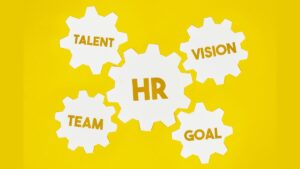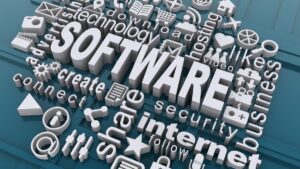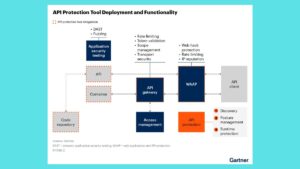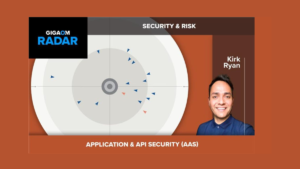The Modern Payroll System: Navigating Challenges and Embracing Innovations

Payroll management is a critical component of any business, directly impacting employee satisfaction, compliance, and financial stability. As organizations grow and the workforce evolves, payroll systems must adapt to meet new demands and integrate advanced technologies. In this blog, we’ll explore the key aspects of modern payroll management, common challenges, and innovative solutions to streamline payroll processes and ensure accuracy and efficiency.
Understanding Payroll Management
Payroll management involves the processes and systems used to calculate and distribute employee wages and salaries, ensure compliance with tax regulations, and maintain accurate records. It encompasses various tasks, including:
- Calculating Employee Earnings: Determining gross pay based on hours worked, salary, bonuses, and other forms of compensation.
- Withholding Deductions: Deducting taxes, insurance premiums, retirement contributions, and other withholdings from employee paychecks.
- Disbursing Payments: Ensuring timely and accurate payment of wages through direct deposit, checks, or other methods.
- Reporting and Compliance: Filing tax returns, managing employee benefits, and complying with labor laws and regulations.
Common Payroll Challenges
- Compliance and Regulation
- Navigating Complex Regulations: Payroll systems must comply with federal, state, and local regulations, which can vary significantly and change frequently. Keeping up with tax laws, wage requirements, and reporting obligations can be challenging.
- Avoiding Penalties: Non-compliance can lead to penalties, fines, and legal issues. Ensuring accurate tax withholdings and timely reporting is crucial to avoid costly mistakes.
- Accuracy and Error Management
- Preventing Calculation Errors: Manual payroll calculations are prone to errors, which can result in incorrect paychecks and dissatisfied employees. Ensuring accuracy in calculations, deductions, and benefits is essential.
- Handling Data Integrity: Managing large volumes of employee data requires robust systems to prevent data entry errors, duplication, and security breaches.
- Integration with Other Systems
- Synchronizing Payroll with HR and Accounting: Payroll systems must integrate seamlessly with HR and accounting systems to ensure consistent and accurate data across all platforms.
- Managing Time and Attendance: Integrating payroll with time and attendance systems can streamline processes but may require careful configuration to ensure accurate data transfer.
- Scalability and Flexibility
- Adapting to Business Growth: As organizations grow, their payroll needs become more complex. Payroll systems must be scalable to handle increasing numbers of employees, diverse compensation structures, and evolving regulatory requirements.
- Supporting Remote and Global Workforces: Managing payroll for remote or international employees introduces additional challenges, such as varying tax laws and currency conversions.
Innovations in Payroll Management
- Automated Payroll Systems
- Streamlining Processes: Automated payroll systems reduce the risk of human error and save time by automating calculations, deductions, and payment processing. These systems can handle complex payroll scenarios, such as overtime, shift differentials, and bonus calculations.
- Real-Time Data Processing: Modern payroll systems provide real-time processing of payroll data, allowing for immediate adjustments and up-to-date information on employee earnings and tax withholdings.
- Cloud-Based Payroll Solutions
- Enhancing Accessibility: Cloud-based payroll systems offer accessibility from anywhere, enabling HR and payroll professionals to manage payroll remotely. This flexibility supports remote and distributed workforces and ensures continuity of operations.
- Scalability and Integration: Cloud-based solutions can easily scale to accommodate business growth and integrate with other systems, such as HR, accounting, and time tracking platforms.
- Data Analytics and Reporting
- Providing Insights: Advanced payroll systems offer data analytics and reporting capabilities, allowing organizations to gain insights into payroll costs, employee compensation trends, and compliance metrics. This data helps in making informed decisions and optimizing payroll management.
- Customizable Reports: Payroll systems can generate customizable reports to meet specific business needs, such as tax filings, audit trails, and financial forecasts.
- Self-Service Portals
- Empowering Employees: Self-service portals enable employees to access their pay stubs, tax documents, and benefits information online. This reduces the administrative burden on HR and payroll teams and provides employees with greater control over their information.
- Updating Personal Information: Employees can update their personal information, such as address or banking details, through self-service portals, ensuring that payroll records are accurate and up-to-date.
- Mobile Payroll Solutions
- Access on the Go: Mobile payroll applications allow employees to access their payroll information, view pay stubs, and request time off from their smartphones. This convenience enhances employee engagement and supports remote and mobile workforces.
- Real-Time Notifications: Mobile solutions can provide real-time notifications for important payroll events, such as paydays, tax filings, and benefits updates.
Best Practices for Effective Payroll Management
- Regular Audits and Reviews
- Conducting Payroll Audits: Regularly audit payroll processes and systems to identify and address discrepancies, compliance issues, and inefficiencies. Audits help ensure accuracy and prevent potential problems before they escalate.
- Reviewing Procedures: Continuously review and update payroll procedures to reflect changes in regulations, business needs, and technological advancements.
- Training and Development
- Investing in Training: Provide training for HR and payroll professionals to ensure they are knowledgeable about current regulations, technologies, and best practices. Ongoing education helps maintain compliance and improve payroll accuracy.
- Staying Informed: Keep up with industry trends and developments to stay informed about new technologies, regulatory changes, and best practices in payroll management.
- Clear Communication
- Informing Employees: Communicate clearly with employees about payroll processes, including pay schedules, deductions, and benefits. Transparency helps build trust and reduces confusion.
- Addressing Concerns: Provide support for employees who have questions or concerns about their pay. Timely resolution of payroll issues contributes to a positive employee experience.
Conclusion
Effective payroll management is crucial for organizational success, impacting employee satisfaction, compliance, and financial stability. By addressing common challenges, embracing innovative solutions, and implementing best practices, organizations can streamline payroll processes, ensure accuracy, and support their workforce. Investing in modern payroll systems and technologies not only enhances efficiency but also positions organizations for long-term success in an ever-evolving business landscape.







